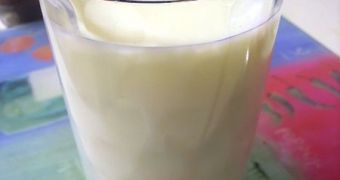A small study has recently demonstrated that milk allergies can be fought in children using milk drops. Small amounts of milk protein are placed under the infant's tongue, and apparently this works in reducing the response their body produces when exposed to the liquid later on. The work was conducted at the Johns Hopkins Children's Center, and the Duke University, but the investigators admit that more work on larger study groups is needed in order to validate their conclusions. Details of the investigation were showcased on February 28, at the annual meeting of the American Academy of Allergy, Asthma & Immunology, ScienceDaily reports.
Over the past few years, many research groups around the world have used a new kind of therapy in curing allergies, and even phobias. In the first instance, people develop strong immune system responses when exposed to a certain chemical, or to dust, while in the second case they exhibit a strong, yet unfounded, fear response to a snake, a spider or blue airplanes. With sublingual immune therapy (SLIT), children are exposed to very small doses of milk proteins, over prolonged periods of time. As the days go by, they are given progressively larger doses of the stuff, until their immune system learns not to react so drastically when exposed to the allergen.
SLIT is therefore based on the human immune system's ability to “learn” and adapt its response to the various chemicals it's exposed to. Other similar approaches to treating allergies include oral immunotherapy, where milk proteins for example need to be ingested, rather than simply placed under the tongue. “We are very excited to see that both approaches can achieve significant improvement in children with milk allergies, but we continue to see slightly better tolerance in children on oral immunotherapy. Nonetheless, SLIT emerges as a new, if slightly less powerful, weapon in our arsenal,” says Hopkins Children's director of Allergy & Immunology, Robert Wood, MD, also the lead investigator of the new research.
The study experts say that children treated with both therapies tended to exhibit only mild side-effects, a lot less dangerous than what their immune systems would otherwise provoke. The most common manifestations of their allergies were throat and mouth itching, but the researchers say that the frequency of instances in which the children developed abdominal and respiratory symptoms decreased considerably with both methods.

 14 DAY TRIAL //
14 DAY TRIAL //